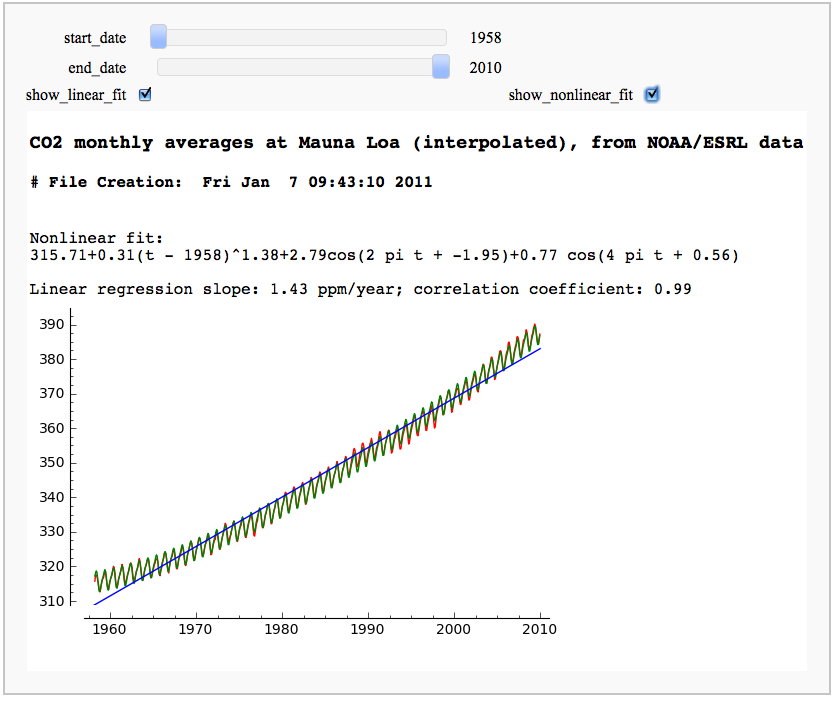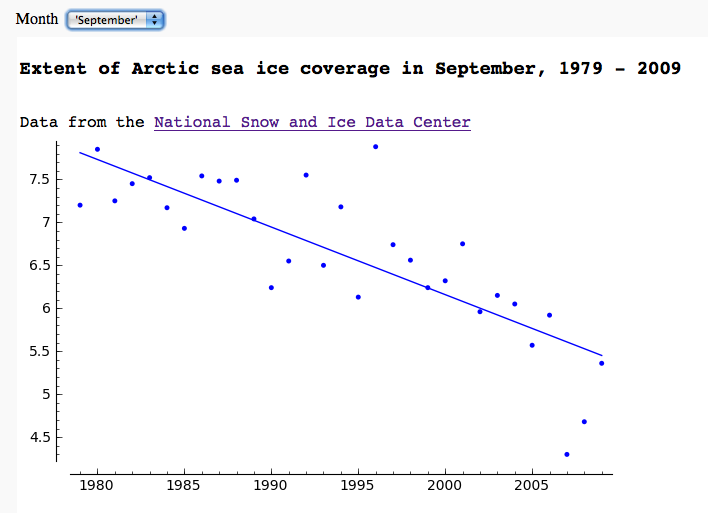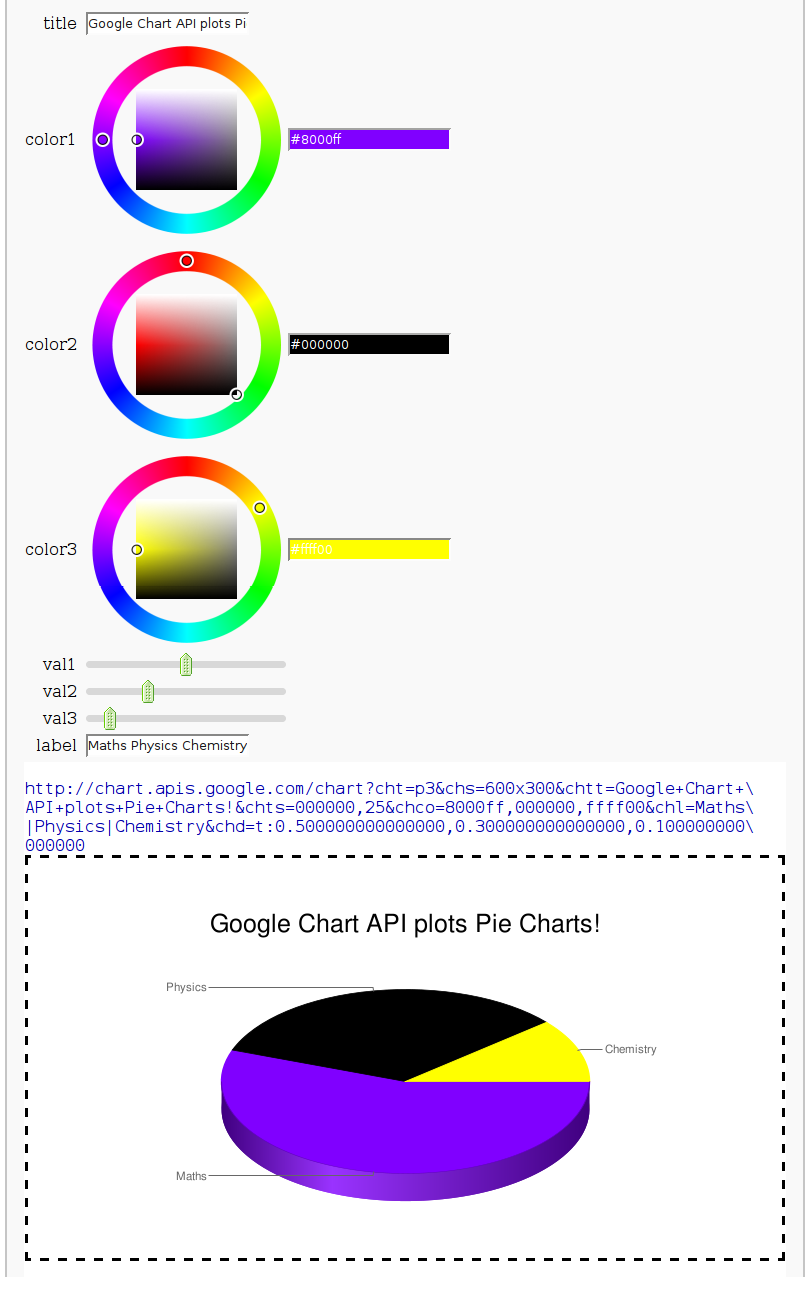Sage Interactions - Web applications
goto interact main page
Contents
Warning: Web apps can break frequently due to websites or services changing locations or formats!
CO2 data plot, fetched from NOAA
by Marshall Hampton
One can do many things with scipy.stats. This only scratches the surface.

Arctic sea ice extent data plot, fetched from NSIDC
by Marshall Hampton

Pie Chart from the Google Chart API
by Harald Schilly

Stock Market data, fetched from Yahoo and Google FIXME
by William Stein
(Need to fix plotting warnings as well as some stocks give index errors (like bcc), and Python 3 changes, etc.)

